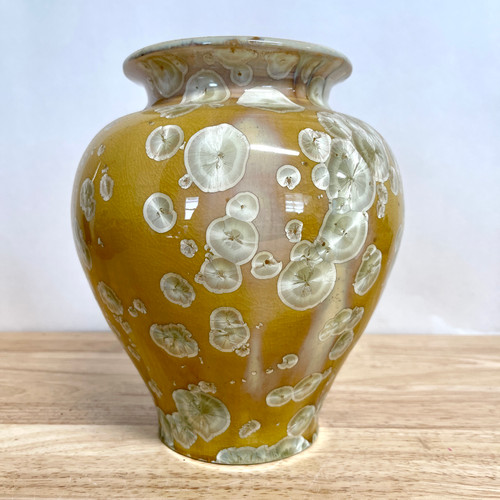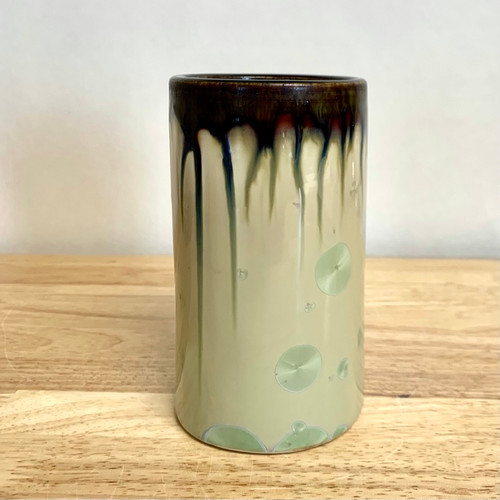Crystalline Glaze Pottery

Crystalline is the art of growing crystals on pottery during the firing process. It is a special effects glaze made primarily of particles of zinc oxide and silica. These two ingredients, along with others, are mixed with water and applied to the piece in a thick paste. I image at left is a Phil Morgan vase we bought some years ago.
While at peak temperature (between 2340 and 2400 degrees F), a chemical reaction takes place between the zinc oxide and the silica forming seed crystals from which the crystals will eventually mature. In nature, crystals form and grow as molten rock cools. So to trigger the crystals to grow, the pottery is allowed to begin to cool. At this point the zinc will seed out as a little dot and start to grow. The temperature is then stabilized for anywhere from five to seven hours to allow the crystals to achieve the desired size. The longer the temperature is held constant the bigger the crystals can become. Once this cycle is completed, the kiln is tuned off, and the crystal growth period ends.
The consistent temperature allows the zinc in the glaze time to grow into totally unique crystalline structures creating a truly one of a kind piece of art. The design can never be duplicated. The crystalline glaze itself is white in color. Metallic pigments such as manganese dioxide, iron oxide, nickel oxide, cobalt carbonate, or copper carbonate as well as others are added to create the wide color spectrum of the crystalline glazes you see in the pottery.












